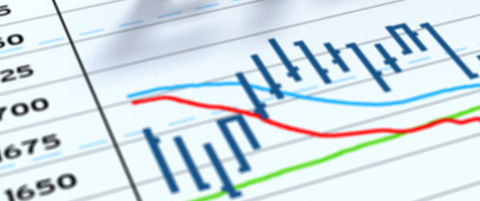By Jim Lewis, CEO Enhanced Retail Solutions LLC
In a recent meeting with a retailer, we debated what the appropriate period of time is enough to call something a bonafide trend. The short answer is it depends on the circumstances. Getting it right has a great impact on your inventory planning.
In our forecast model we use a sales curve/profile that has seasonality, promotions and calendar shifts built in. We also calculate lost sales and add them to the historic sales basis. For brick & mortar we build forecasts bottoms-up (a forecast for each SKU-store, rolled-up). There are a few other business rules taken into consideration, but using good old-fashioned algebra that you swore you’d never use again handles the math part.
Calculating Potential
If your past 8 weeks sales were 1,000 units and the last 8 weeks on the sales curve were worth 7.5%, the total potential for the life of that curve is 13,333 (1,000 / .075). With that potential, you can now calculate any other point along the curve by multiplying the potential by the curve percent for that period. If August is worth 22%, that equates to 2,933 units (13,333 / .22). But is 8 weeks enough time to calculate the basis? For new items, maybe fashion apparel, 4 weeks might be better. For basics like sheets that have been selling for a long time, 12 or 16 weeks may be more appropriate.
Determining the Optimal Time Period
Generally, the longer the period you use as the basis, the more diluted the annual potential becomes. So, if you’re looking for a more conservative forecast, use more weeks. If you want it to be more aggressive- use less. Adjusting the curve will also change the results. Let’s say a given week is worth only 1% of the business. But for whatever reason, it unpredictably turns out to be a spectacular weekend to be indoors and traffic is up 50%. You sell far more than expected, let’s say 500 units. If you do the math on the curve, you get a potential of 50,000 units (500 / .01). Significantly larger than the 13,333 units we came up with earlier. If you used only that 1 week as the basis of the forecast, and this trend doesn’t continue, you’ll have an ugly inventory situation to deal with. In our VMI model we compromise by using a mix of time frames to calculate the rate of sale. We take a short term (4 weeks) and average it with a long-term (16 weeks).
Human Intelligence
Asking ChatGPT if your forecast is accurate will yield some very interesting results. But as many merchants have said before me, retail is not rocket science. AI has not been able to replace the instinctual feel a buyer or supplier has for a particular product. There are other factors such as presentation, changes in the assortment, ad-hoc promotions, etc., that cannot be determined mathematically (at least not yet, but give me time, I’m working on it). One area where AI is helping is predicting which items or stores are most likely to run out. We utilize these in our VMI model.
Demand Planning Tools
There are many forecasting tools on the market. We’ve learned that every business likes to do it a little differently, so you need a tool that offers a lot of customization. Our Rolling Forecast and Item Planner (ladder planning) tools offer great flexibility. A forecast should not live with 1 rule alone. Your demand planning tool should allow you to select what period of time to base the forecast on. You might change it week to week. Our tool shows a 4,8-,12-,16- and 26-week potential side by side. A good planner will have a sense for when to use more or less weeks based on all the other non-mathematical variables.
For more information on automating and improving your forecasting accuracy, contact us.


Comments are closed